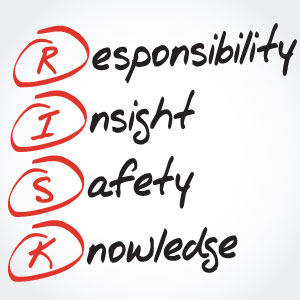As it is said there are two unavoidable events of human being’s life cycle : Death & Retirement. Although we can not really predict the first, we can really foresee our retirement and plan for it.However, retirement, although the most important and unavoidable event of life, it mostly remains unplanned due to other priorities in life. We plan for all important events of life – be it buying a home, planning for kids marriage, but fail to plan for this most challenging part of our life-stage . We all need to retire in peace and when asked we all would like to have a happy retired life but without quantifying the same in financial terms definition of ‘HAPPY Retired Life’ remains very vague.
But before we go ahead and discuss about how to go about retirement planning and things to consider, lets try to understand at first as to why do we need retirement planning.
Compared to yesteryears during the period of high interest rate region planning for retirement was much easier with fixed income products offering interest rates as high as 12-13%, which have gradually come down now and expected to fall further in future. Against this, life expectancy of an average Indian has gone up with medical advancement. Now aspirational levels have gone up as people want to fulfill their dreams and hobbies during their retired life, which they were unable to do during their professional life. Let us summarize the Why factor of retirement planning as under:
- Falling interest rates (Interest rates on fixed income products have now become market linked and have come down considerably in last one decade or so).
- Aspirational levels are going up with more and more people wanting to pursue their hobbies/dreams during their retired life.
- Change in social structure with growing urbanisation, trend of nuclear families with children often staying away from parents.
- Higher life expectancy due to advancement of medical science.
- Ever increasing medical cost and 78% of total health expenditure is privately funded.
- The most important factor: Inflation
Among all, inflation can be considered as the most important factor affecting retirement planning with ever increasing cost of living for developing country like India. With an average inflation rate of around 7%, your monthly expense of around 25000 can grow to around 1 lakh in 20 years time and close to 2 lakhs in next 30 years.
(Inflation assumed @7%)
As can be seen from the above graph just to maintain the same standard of living for a family with monthly expense of .25000 one would require 1 lakh per month after 20 years. Again this is just with an assumed inflation of 7%.
This was about the importance of retirement planning. Now another important question to be answered is how much retirement kitty should one have? Although there are no simple answers to this as there is no single figure that can apply to all. Every individual has to calculate on his/her retirement corpus requirement after considering the following important factors:
- The age at which one needs to retire.
- His/her current life style. (Mainly monthly expense)
- Assume realistic rate of return during your working life as well as during the retired life.
- Rate of inflation
- Consider any of your current retirement savings plan (pension plans, insurance, provident funds etc)
- Any specific dream/hobby one likes to pursue during retired life.
(Note: Assume that the above list is not comprehensive and just for example purpose. One needs to consult his adviser to do know about retirement planning process)
After assigning specific numbers to all the above questions one can arrive at retirement corpus required and then arrive at investment required to be made with the assumed rate of return.
The idea of retirement fund is that the money should last for all of our retirement years, meeting our expenses. The income from kitty and withdrawals from later years should match the expenses (growing with inflation) in post retirement years.
This is very critical, since with better medical services, average retirement years have increased and it is possible that a person retiring at say age 60 would easily have nearly 30 years as retirement. Developed countries have higher life expectancy, something India will sure achieve in the next coming decades. The criticality can be very simply understood by acknowledging that we may normally have 35 working years (age 25 to 60 years) in which we have to save for the 30 retirement years (60 to say 90 years) when we will not be working. Thus it is very critical that we realize this requirement and start planning immediately. Ever increasing cost of living will only add to our misery during retirement years when we mainly have to rely on our savings without having any major source of additional income.
Be vigil and open for course correction:
To arrive at a retirement corpus is just first stage of planning process. As we all go through different phases in life it is very important to keep one self open to make necessary changes on a regular basis. Major life events which require modifications in retirement plan are:
- Change in employment status ( One can increase contribution with promotion/increment in job)
- Change in family status (Getting married, arrival of a child etc.)
- Change in tax laws
- Getting any lump sum financial benefit through inheritance
Retirement Planning Options Available:
There are different retirement benefit solutions available in the market like insurance products aimed retirement benefits, planning through SIP in equity mutual funds, pension plans, employer sponsored retirement benefits etc.
As retirement planning is mostly done with long term investment horizon of above 5 years it should ideally be done by getting maximum exposure to equity as an asset class as over long time horizon equity has the potential to outperform all other asset classes. Investing systematically on a monthly basis through SIP route in equity mutual funds can benefit investors by taking advantage of power of compounding. Although one is always advised to keep his/her asset allocation in check to make sure that one does not overboard on a single asset class.
Another idea is to create assets that will give returns post retirement, like property, which can be put on rent or land which can be farmed, etc.
Conclusion: Retirement planning is an ongoing, lifelong process which requires commitment, patience and consistency on part of investors to reap rich dividend of final payoff of retirement kitty. No matter how big retirement corpus requirement may look like, one needs to start at some stage no matter how small that start may be. So don’t wait for the right opportunity or the right time to come as the right time is NOW to make your retired life comfortable.











